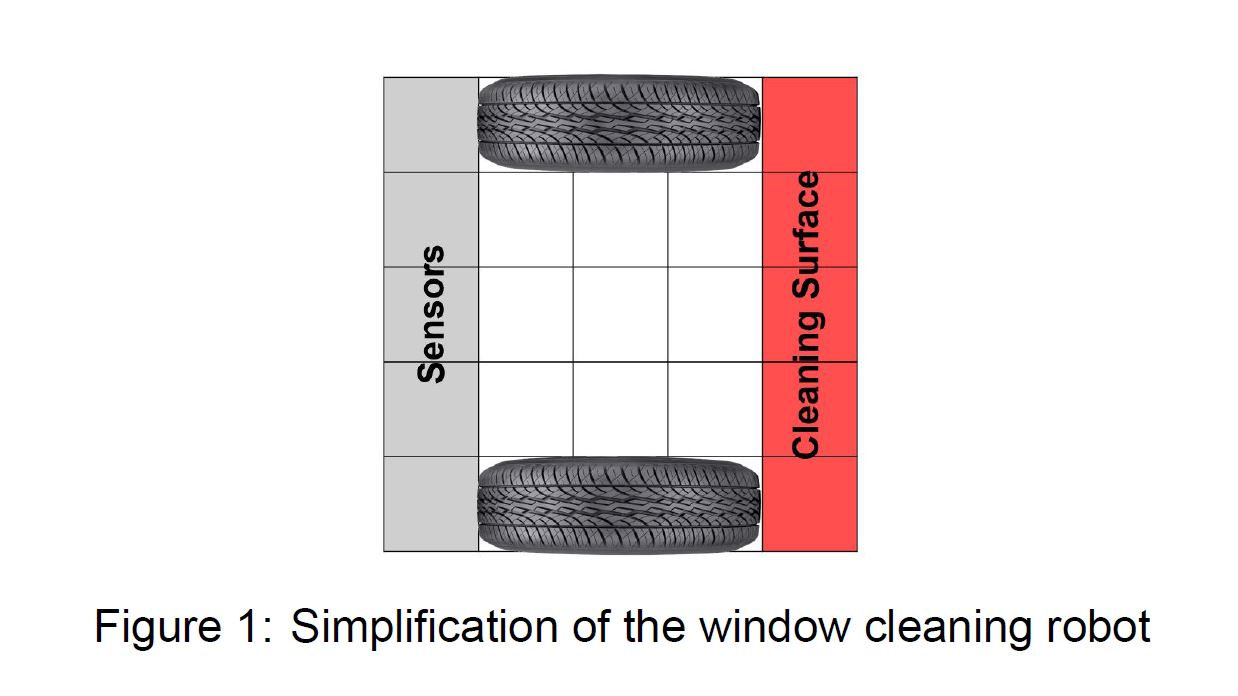Window Cleaning Robot
The robot is assumed to have a square shape and covers an area of 5 x 5 patches, which thus
equals an area of 250 x 250 mm. These dimensions are very similar to the current commercially
available window cleaning systems such as the Hobot, Windoro, and Winbot.
Because this project considers the motion planning algorithms and not the particular geometry of
the robot, the geometry of the robot needed to be set as fixed. Which means that the variables
relating to this geometry are removed from the problem. The bottom side of the robot is divided
into 5 x 5 squares, see the figure below.

The simplified window cleaning robot has, besides the dirt sensors, also a few other sensors,
namely gravity and force sensors. Both sensors are not explicitly modeled but do make up an
important part of the model. For example, the existence of gravity sensors enables the robot to
know what the upper and lower side of the window is. Force sensors, on the other hand, are
mounted on each side of the robot. These sensors enable the robot to detect whether it hits one
of the edges of the window.
At last, an important remark should be made about the abstraction of the rubber ring that is enclosing
the robot, commonly referred to as the squeegee. In window cleaning robots, the squeegee
has actually two functions. First, it is of course needed to wipe away the water that is supplied.
Second, it is necessary for creating a vacuum to make sure that the robot sticks to the window.
Because the squeegee is part of the outer edge of the window cleaning robot, and the outer edge
is only a minor part of the robot, it is decided to abstract over the rubber ring that is functioning as squeegee.
This simplified layout of the window cleaning robot is derived from current window cleaning robots
and therefore represents the reality sufficiently.